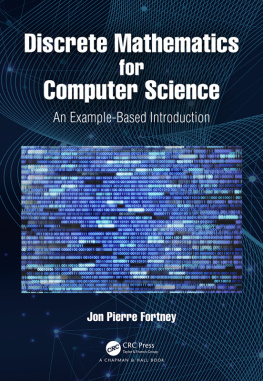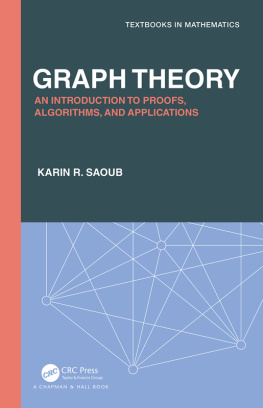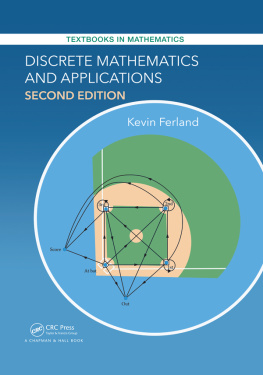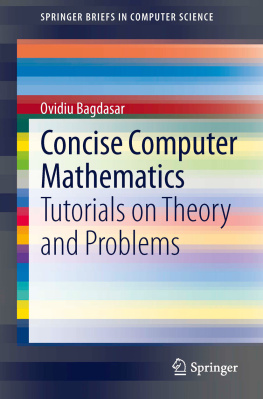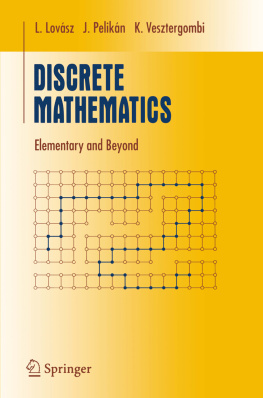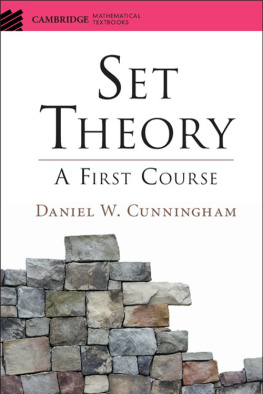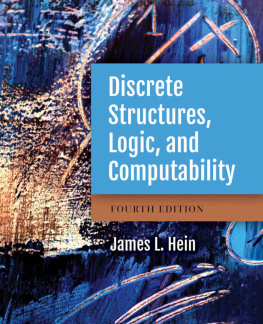Gerard ORegan - Guide to Discrete Mathematics: An Accessible Introduction to the History, Theory, Logic and Applications (Texts in Computer Science)
Here you can read online Gerard ORegan - Guide to Discrete Mathematics: An Accessible Introduction to the History, Theory, Logic and Applications (Texts in Computer Science) full text of the book (entire story) in english for free. Download pdf and epub, get meaning, cover and reviews about this ebook. year: 2021, publisher: Springer, genre: Romance novel. Description of the work, (preface) as well as reviews are available. Best literature library LitArk.com created for fans of good reading and offers a wide selection of genres:
Romance novel
Science fiction
Adventure
Detective
Science
History
Home and family
Prose
Art
Politics
Computer
Non-fiction
Religion
Business
Children
Humor
Choose a favorite category and find really read worthwhile books. Enjoy immersion in the world of imagination, feel the emotions of the characters or learn something new for yourself, make an fascinating discovery.
- Book:Guide to Discrete Mathematics: An Accessible Introduction to the History, Theory, Logic and Applications (Texts in Computer Science)
- Author:
- Publisher:Springer
- Genre:
- Year:2021
- Rating:5 / 5
- Favourites:Add to favourites
- Your mark:
Guide to Discrete Mathematics: An Accessible Introduction to the History, Theory, Logic and Applications (Texts in Computer Science): summary, description and annotation
We offer to read an annotation, description, summary or preface (depends on what the author of the book "Guide to Discrete Mathematics: An Accessible Introduction to the History, Theory, Logic and Applications (Texts in Computer Science)" wrote himself). If you haven't found the necessary information about the book — write in the comments, we will try to find it.
This stimulating textbook presents a broad and accessible guide to the fundamentals of discrete mathematics, highlighting how the techniques may be applied to various exciting areas in computing. The text is designed to motivate and inspire the reader, encouraging further study in this important skill.
Features: This book provides an introduction to the building blocks of discrete mathematics, including sets, relations and functions; describes the basics of number theory, the techniques of induction and recursion, and the applications of mathematical sequences, series, permutations, and combinations; presents the essentials of algebra; explains the fundamentals of automata theory, matrices, graph theory, cryptography, coding theory, language theory, and the concepts of computability and decidability; reviews the history of logic, discussing propositional and predicate logic, as well as advanced topics such as the nature of theorem proving; examines the field of software engineering, including software reliability and dependability and describes formal methods; investigates probability and statistics and presents an overview of operations research and financial mathematics.
Gerard ORegan: author's other books
Who wrote Guide to Discrete Mathematics: An Accessible Introduction to the History, Theory, Logic and Applications (Texts in Computer Science)? Find out the surname, the name of the author of the book and a list of all author's works by series.

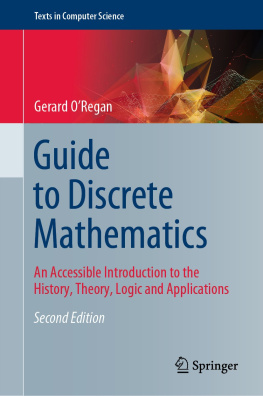
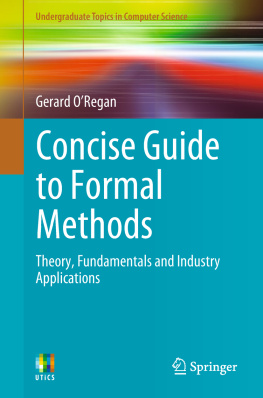
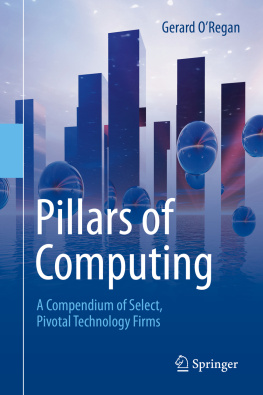
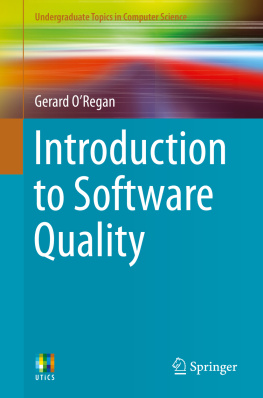
![Sergei Kurgalin [Сергей Кургалин] - The Discrete Math Workbook: A Companion Manual Using Python, 2nd Edition](/uploads/posts/book/307629/thumbs/sergei-kurgalin-s-k.jpg)
